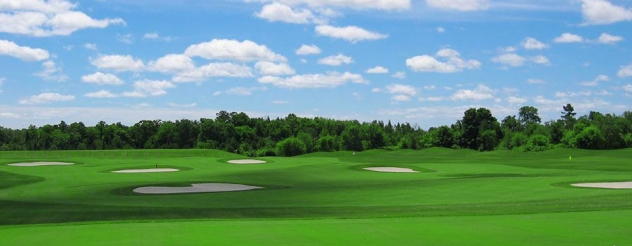THE CONSTRUCTIONIST.

OCT
23
WHAT YOU NEED TO KNOW ABOUT BUNKER SAND
Did you know choosing the right sand for a golf course can be a serious task? The sand chosen for bunkers can impact the playing quality, maintenance, style of construction and the architecture of the golf course. There are various factors that should be considered when choosing the perfect sand, and each component can have a major impact on the overall effect for the player.
1. Size - The particle size of sand in a bunker should fall between .25 and 1 mm. Sand particles that are smaller than .05 mm should be kept at a minimum because they can cause the surface to crust. One also needs to take into consideration the sand used in the soil and grass surrounding the bunker. Sand from the bunker will get kicked up onto the green and around the bunker. If the sand is finer than that used in the soil, it may cause drainage problems. Sand that is too coarse or large in size should also be avoided since it can cause damage to mowing equipment.
2. Shape - Shape is determined by the sand’s angle and roundness. Sand can vary from being sharp with many edges to well-rounded with more of a smooth surface. The more angular the sand particles are, the more resistant to compression, resulting in less of a natural divot when the golf ball falls into the sand. This makes it easier to hit the ball and is preferred by golfers. On the other hand, smooth, rounded sand particles produce more of a natural divot which makes it more difficult to hit the ball. This all changes during rainfall when the sand naturally becomes compressed.
3. Hardness - Sand with a higher pH is more resistant to weathering. On the other hand, soft sand breaks down more easily, which may result in drainage problems. Though not as important as size and shape, the pH and hardness should be taken into consideration.
4. Infiltration Rate - This refers to how well the sand drains. Bunker sand should drain at a minimum of 20 inches per hour. Initially, the sand will drain very well, but over time, as it gets contaminated by nearby soil and by rainfall, the infiltration rate slows. Installing a new drainage pipe may help, but complete sand replacement may be the only solution.
5. Colour - Sand colour often plays an important part in what sand is chosen because the colour will affect the overall appearance of the course. Lighter sand is often used since it complements the green grass. When the sand is replaced in the bunker to account for what has washed away, it is important to match the former sand colour, otherwise it can be a lot of manual labour to rake and blend the colours together.
6. Overall Playing Quality - The goal is to choose sand that is great for playing quality; however, this can be highly subjective. What one person feels is great playing quality may differ from another person. Most people believe that bunker sand should be consistent throughout the course. Therefore, if sand is replaced in one bunker, sand should be replaced throughout the entire course. Obviously, this can become very costly. Most courses rake the frequently, as more frequent raking will prevent crusting, resulting in improved playing quality.
When these factors are taken into consideration, you can find the perfect bunker sand to complete your course. At Brock Aggregates, we supply a wide range of sand products. Visit http://www.brockaggregates.com/ for more information.
Looking for the perfect soil for golf course divots? Check out EarthcoSoils.com today!
FIND A LOCATION NEAR YOU
BY POSTAL CODE
KMBY CITY















